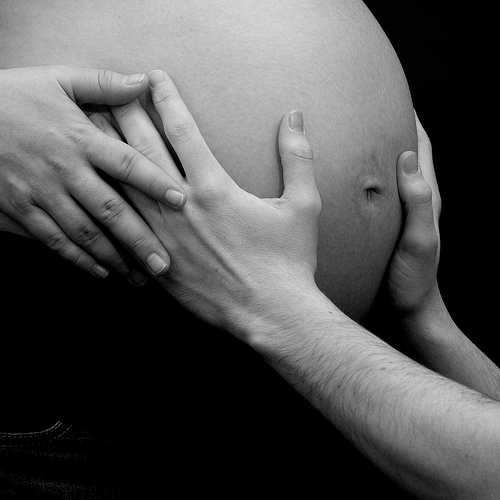
Pregnant women used to be told any exercise beyond even the most low-key, minimal exertion would endanger both their health and that of their fetus. The main concern was that the mother and fetus wouldn’t gain enough weight to produce a healthy baby come birth. It was also thought that when a pregnant woman runs, the fetus would be harmed because of less oxygen and blood flow going to the uterus. Because of fears like these, the American College of Obstetrics and Gynecology (ACOG) used to say that pregnant women shouldn’t work out strenuously for more than 15 minutes and that they should keep their heart rates below 140 beats per minute. In other words, don’t really run. A lot of faithful women runners chose to ignore those recommendations when they became pregnant. As they did, and seemed to produce normal, healthy babies, more studies were done about running and pregnancy. Among other good things, these studies found that the fears of damage to the fetus by running moms-to-be were unfounded. The pregnant body has compensatory mechanisms for decreased oxygen and blood flow to the uterus. It’s been shown that both the woman and fetus have all the fuel they need when the woman runs, even in the late stages of pregnancy, when fetal growth really takes off. Hey, Sue Olsen had to get energy somewhere during that 24-hour race, after all.
In terms of birth and after, studies have shown no real difference between sedentary pregnant women and active ones in these important matters:
➤ Complications of pregnancy, labor, and delivery
➤ Type of delivery (C-section versus vaginal)
➤ Circumference of the baby’s head
➤ Overall health of the baby
➤ Weight of the baby at birth
As for weight gain during pregnancy, one study found that active pregnant women put on about 30 pounds each, compared to 39 to 42 pounds for nonexercisers. ACOG recommends that most women gain 25 to 35 pounds.
One study compared women who worked out vigorously, including running, to those whose only exercise while pregnant was walking. When the children of these women were five years old, those of the intense exercisers scored higher on tests of intelligence, coordination, and language skills.
Because of all of this evidence that vigorous exercise is safe, ACOG revised its guidelines in 1994. Now, it encourages women who are fit and active when they become pregnant to remain so as long as they can comfortably during pregnancy. So long as you keep in close contact with your doctor and use common sense, ACOG says, it’s OK to run vigorously throughout your entire pregnancy.
Now, whether Sue Olsen’s exploits would get the ACOG seal of approval, I’m not sure. But I bet they wouldn’t have any problem with Joan Benoit Samuelson, who ran five miles on the morning before she gave birth to her second child, and remembers the
run as one of the favorites of her whole life. Remember, this is a woman who won the Olympic Marathon!
Sue and Joan are among the luckiest ones. No matter how many green lights ACOG gives you, and no matter how dedicated you are, there comes a time when intensive weight-bearing exercise like running becomes too uncomfortable to be worth doing for most pregnant women. If and when that occurs will vary from woman to woman and even from pregnancy to pregnancy for repeat moms. That’s where the common sense part of ACOG’s current guidelines come into play.
When running isn’t an option anymore, many women runners turn to less-intensive cross-training options.
When Janis Klecker, a 1992 Olympian in the marathon, was six months into her second pregnancy and pregnant with twins, running became a hindrance rather than a help. So she switched to swimming, walking, and riding a stationary bike. An Olympic teammate of hers from 1992, Gwyn Coogan, ran until the seventh month of her pregnancy, and then switched to hiking, biking, and swimming. The key is that they sensed when the running wasn’t worth doing anymore, accepted that temporary situation, and found other, more comfortable, ways to stay fit and active.


